Related Tags
Brothers In Arms: Tommy Emmanuel and Jerry Douglas discuss their partnership on the road
As the legendary guitar duo join forces on the road, we chat to them about tone, technique, online debates and their favourite things about each other’s playing.
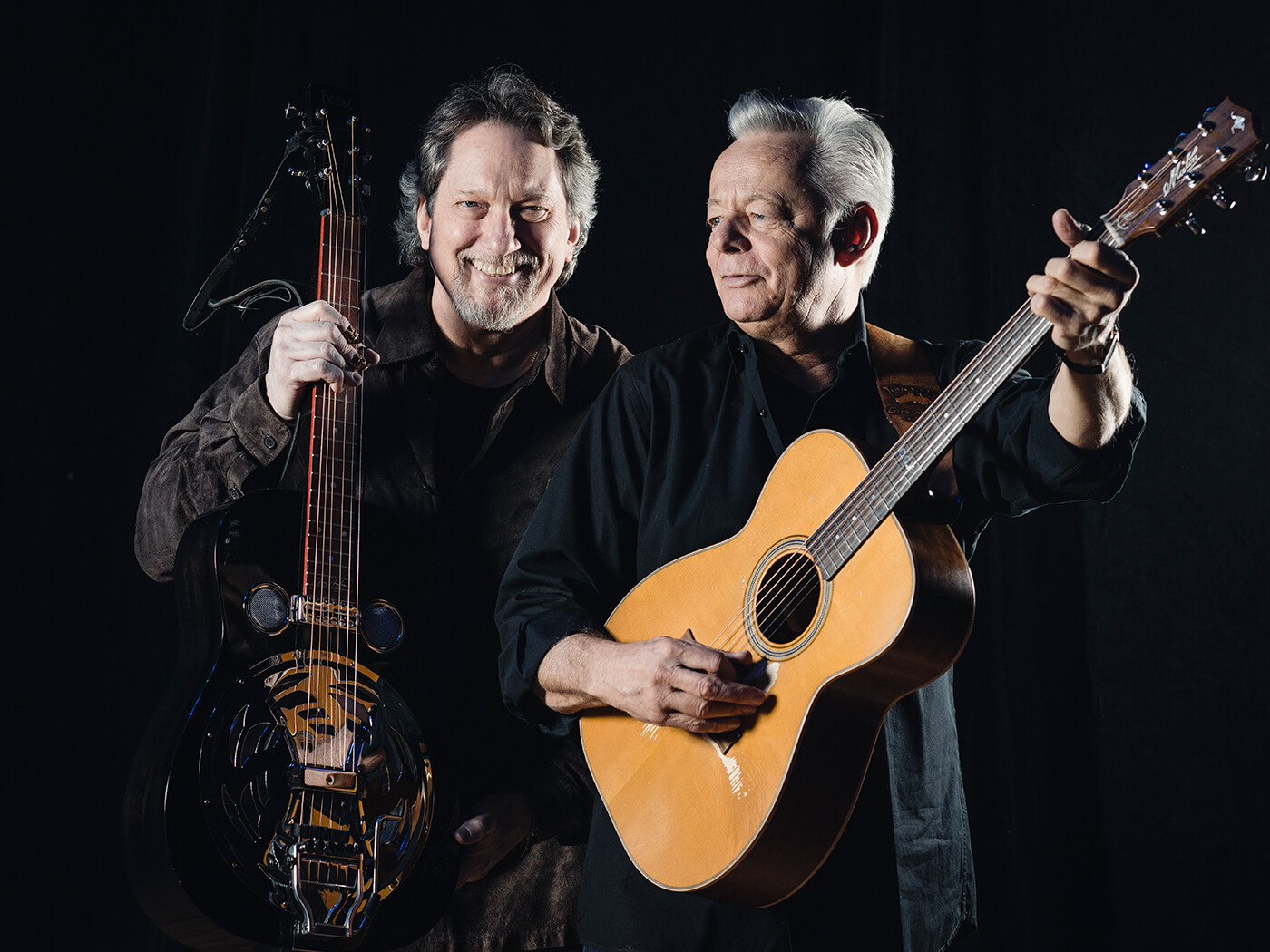
All images: Eleanor Jane
Tommy Emmanuel and Jerry Douglas sit at the top tier of their chosen instrument. Emmanuel is widely acknowledged as one of the finest acoustic guitarists alive and has an adoring pan-continental audience with which he shares his music. As the undisputed lord of the dobro, Jerry Douglas has had to reinforce his home’s shelving to cope with the enormous weight of his 14 Grammy awards and other gold-plated honours, all received for his work on more than 1,600 albums.
The duo are in London for one night only, as part of the Transatlantic Sessions tour. Given their easy rapport, it’s hardly a surprise that their first meeting was one of seemingly inevitable happenstance.
Jerry Douglas: “I was hanging out with Ricky Skaggs one day and he asked, ‘Have you ever met Tommy Emmanuel? He’s incredible.’ I hadn’t but I wanted to. One day, my wife and I went to a comedy show in Nashville. It was sold out but there was an empty seat next to me and who comes up and sits in it? Tommy. I thought, ‘Oh shit! Here he is! Now we can talk.’ And we did.
Tommy Emmanuel: “I’ve been a fan of Jerry since the 1970s but I didn’t grow up as a bluegrass player. I was a country guy who played rock ’n’ roll and a bit of jazz. I’ve always been an accompanist and, actually, Jerry and I have a lot of similarities in that regard. He’s played on everyone’s records and he knows what to play and what not to play. We can go as far out on a limb as we want and still have a lot of fun, and we can also play very contained and enjoy that just as much.”

JD: “That’s when it gets really exciting, when you leave the page and there’s no more thinking about what we did yesterday. That’s gone. Today’s a different story. The key to what we do is listening to each other so we don’t cancel each other out. We play different roles, if he’s playing rhythm and I’m playing lead, then the roles reverse –
TE: “In the blink of an eye.”
JD: “Yeah, it can happen really fast. But I’ve never played with anyone where we automatically had a rapport like Tommy and I have. It’s an amazing thing to me.”
Both Douglas and Emmanuel have forged international careers as lead players as much as accompanists, and while the two disciplines may seem at odds, the approach remains the same.
TE: “It all comes back to what’s right for the song. I’ll listen to what Jerry is playing and I’ll try not to get in his way. If I’m taking a solo then I’m just going to dive in the deep end and trust him to keep it together.
“When we’re playing a tune like Chocktaw Hayride, which goes along at a hell of a clip, I know that he doesn’t need me doing all sorts of stuff underneath him, so I just play like I’m a bass player and a chop player on the mandolin, and then he can do whatever he wants over the top. But that has to be consistent and that’s right for that song.
“When we do a song like [Bruce Springsteen’s] I’m On Fire, I kind of open it out and he just does what he wants. We’ve never discussed it – ‘Will I play there? Will you do that?’ He takes it and then I let him know I’m coming in with the vocal.”
JD: “There’s a lot of eye contact too but listening is the most important thing. I can hear him ramping down getting ready for something else to take over and I can hear him ramping up too. I know when it’s about time to hand this thing off – here he comes regardless.
“Tommy’s such an energetic player – but it’s energetic substance. There are a lot of people that can play a lot of notes with a lot of flash but they don’t have anything to do with what’s in front of you. We’re trying to write a story at the same time. That’s the way I view music, like painting or writing. You can’t just give them licks. That’s boring – and it goes nowhere.”
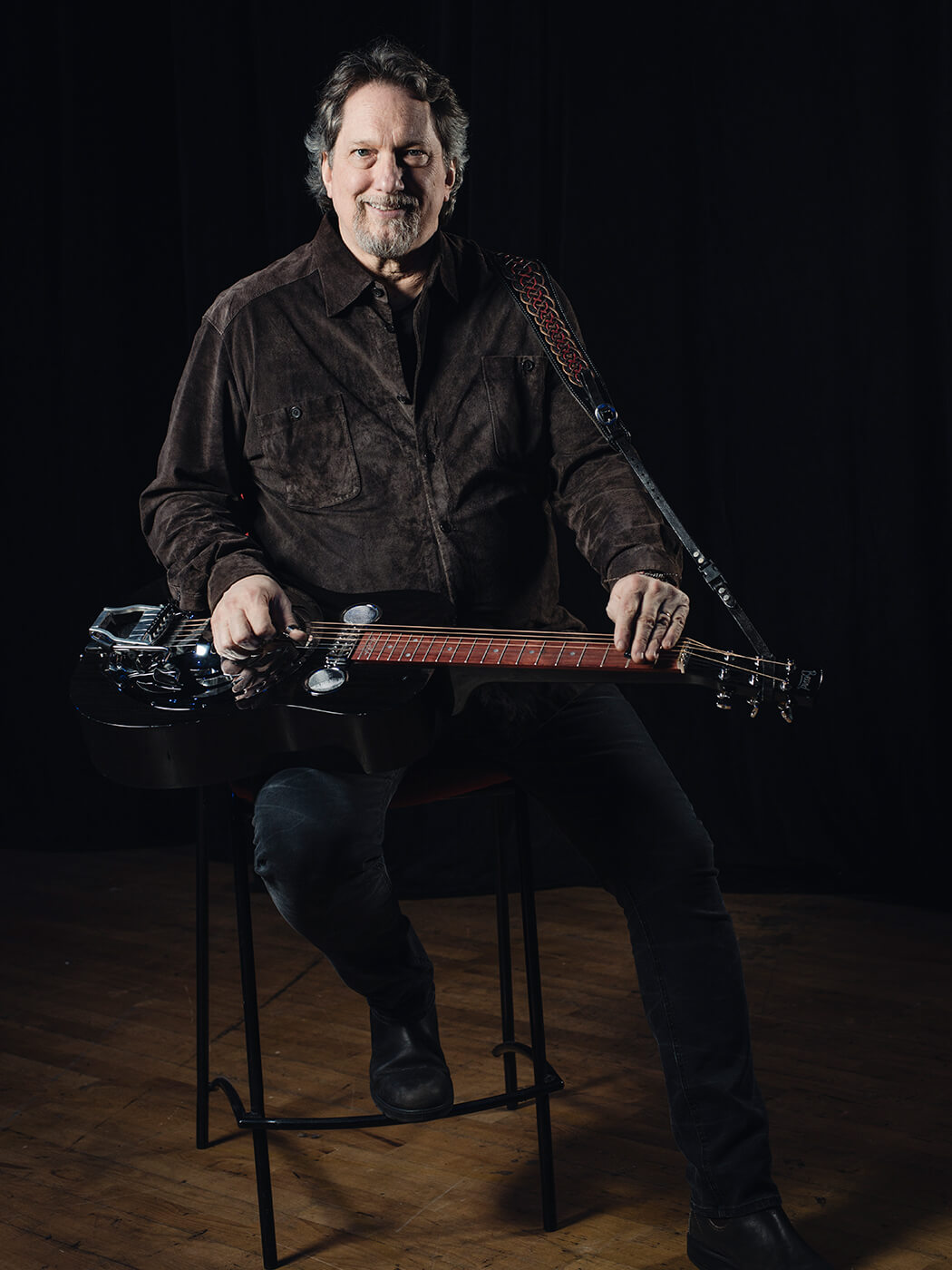
TE: “If you’re going to call yourself a musician, then you’ve got to take the listener somewhere. Tell me a story, move me. That’s what we’re trying to do as we’re playing.
“When we first met, I had him come over to my place and I sat and played him some songs because I wanted his input from a producer’s point of view. Normally, I do everything myself, but with Jerry’s knowledge and experience, I trust him.”
JD: “I just started hearing lyrics over all these beautiful cinematic guitar landscape songs and asked, ‘How would you feel about someone writing some lyrics and singing these songs?’ What I didn’t know was that when he writes a song, he also writes lyrics that no-one ever hears. There’s this actual internal dialogue going on underneath what he is playing.”
“He is a great communicator with his guitar but there is more happening than a lot of people appreciate. It’s something that most players just wouldn’t even think to do. I do a similar thing. I sometimes write short stories and then I write a song around each one before I even have a melody.”
Playing in a guitar-based duo can be challenging and there’s more to active listening than just waiting for the other guy to stop playing. Another vital element is being aware of the frequencies you take up.
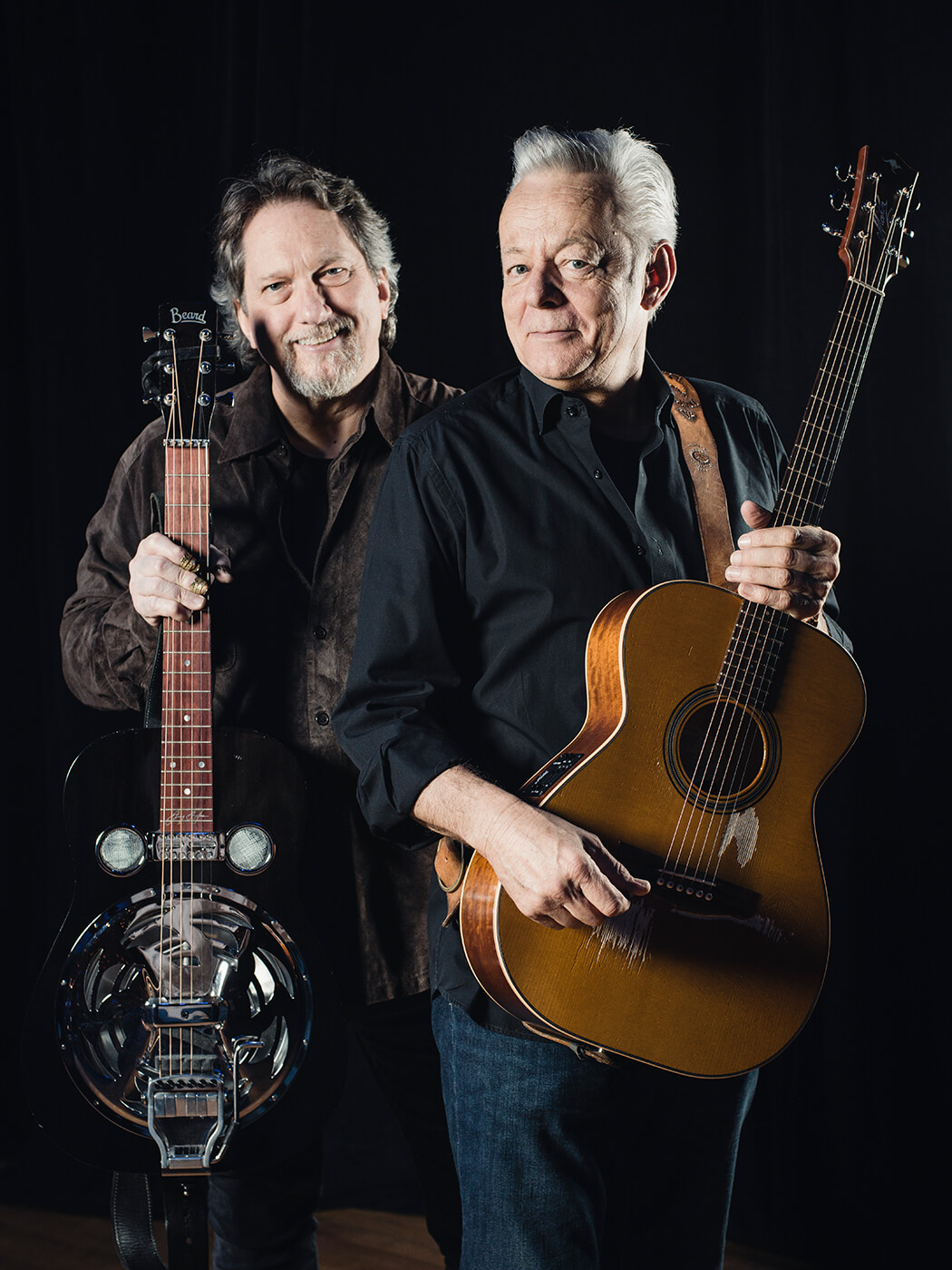
TE: “He’s all the midrange, completely. It’s a sweet midrange but if he wants it to growl and to hit you, it will. It’s all in his touch. So I look for ways to explore other frequencies and I listen for changes in dynamics and all the subtle things he does. I remember all those thousands of road miles I spent listening to Alison Krauss and Union Station, and really listening to Jerry’s playing – all the subtleties, even just the sound of his slide moving is musical, that’s all part of it. You’ve got to hear every detail otherwise you’re playing too much.”
JD: “You know, there are a lot of people on stage with the Transatlantic Sessions and I always say, ‘If you can’t hear the main part then you’re playing too much or too loud. Back off! When it’s your turn, we’re going to focus on you and support you’. You can really ruin a beautiful song by playing more than necessary, coming out of nowhere with a Mixolydian jazz-scale run during a beautiful angelic vocal is a quick way to do that.”
TE: “Putting the song first. That’s so important.”
Tommy Emmanuel has done just that with his upcoming acoustic album The Best of Tommysongs, which mixes brand-new material with mature and expressive takes on fan favourites. Despite the complexity of the music, it was created in an eye-openingly short space of time.
TE: “I recorded the whole album in three days. That’s 26 tracks!”
JD: “Wow, you are familiar with those songs!”
TE: “I wrote them! I wanted some reworked versions of those songs, which have developed somewhat since they were first written. The album has 24 songs and I recorded a couple of bonus tracks ready for different promotions. There are six new songs, which I wrote last year. Then I sat down and chose some songs like Endless Road, Angelina and others from the Only album, which was my first real solo acoustic album outside of Australia.
“You know, I signed away the rights to that first record in perpetuity and now that the material has evolved and I honestly feel I’m playing it so much better and can do a better job sound-wise, so I wanted to set a new baseline for the recording.”
JD: “Songs go through a metamorphosis; you really don’t know a song when you first record it. You don’t know it personally, you have to live with it on the road and it will grow and evolve and surprise you.”
TE: “I think we also change and get a different view of the world. When I listen to my playing from 20 or 30 years ago, it’s like I had tunnel vision, and now my worldview is far more open and I have a wealth of life experience to draw on, which I just didn’t have back then. I’m a lot less afraid to try different things and I’m happy to trust my instincts, especially when it comes to trusting feeling over technique.”
Although well known for his use of acoustic resonator guitars built by Paul Beard, Douglas has found the Transatlantic Sessions a perfect environment for experimenting with new textures.
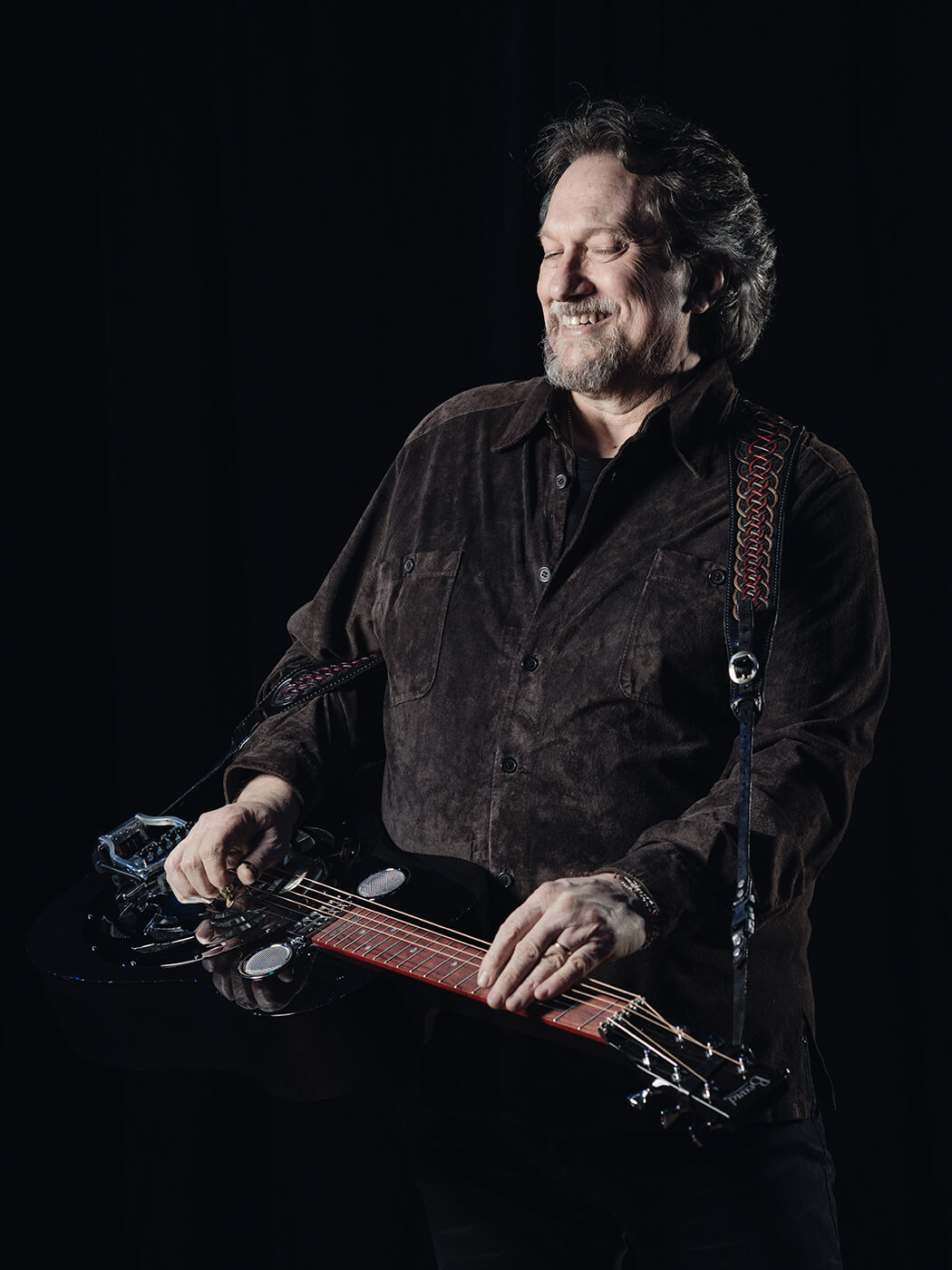
JD: “I keep a lap-steel over here in the UK, which was built by Jason DuMont of Lap King Guitars. Plus, a fellow gave me one in Liverpool a few years ago and in the whole ruckus I didn’t get his name, and then just this year I found out who it was. It’s a Palfray guitar with a P-90, and that goes straight into a volume pedal, then the delay, then into the [Paul Cochrane] Timmy, then another delay, then right into the amp.
“So, the delay goes into the distortion, which is totally wrong but totally right – I’m distorting the whole sound as it hits the amp. That guitar is particularly well suited to the acoustic instruments. It’s a little darker with a more rounded sound but a really haunting high-end.
“It’s another way to support and accent the substance of the song or a particular lyric. With all that sustain and then the overdrive pedal, we have some songs where I’m flooring the pedal and it’s useful when it’s time to make a statement.
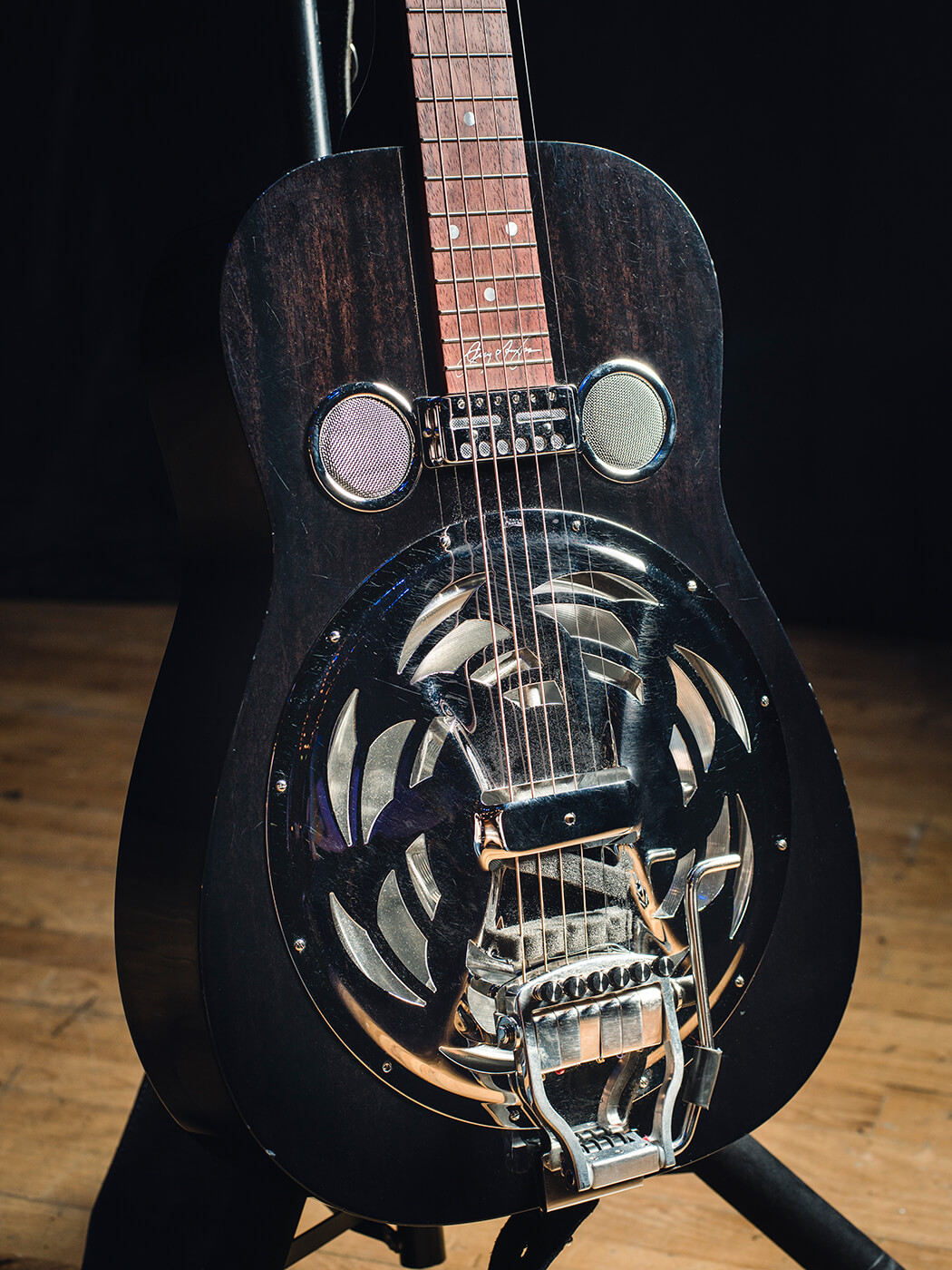
“I’m using a Paul Cochrane Timmy pedal. I’ve gone through all kinds of distortions and overdrives. I don’t like reverb very much. I prefer delay – or two delays. So what I’m doing with the lap-steel is not soloing so much as supporting. Just texture stuff, that’s really fun for me.
“I’m sort of the guinea pig for the dobro world anyway. I’m the first guy that gets the new strange-shaped bar or the pickup. I worked with Fishman for a long time on a pickup, and now I’ve got this hipshot bridge on the guitar so I can instantly change tunings. Regular tuning is GBDGBD but you throw this open and you’re in D, which gives a more bluesy feel than it does bluegrass or country. It takes you from one mindset to another.
“I’ve played so much that I don’t care if I ever play another solo again. I just want to support people, to stand behind them and play music that gives them somewhere else to go.”
TE: “As far as the dobro is concerned, Jerry has pretty much defined where it’s going for the next couple of hundred years, so I think the instrument is safe!”
While anything that works with the song is fair game in the studio, Maton guitars are still Emmanuel’s first choice for live work.
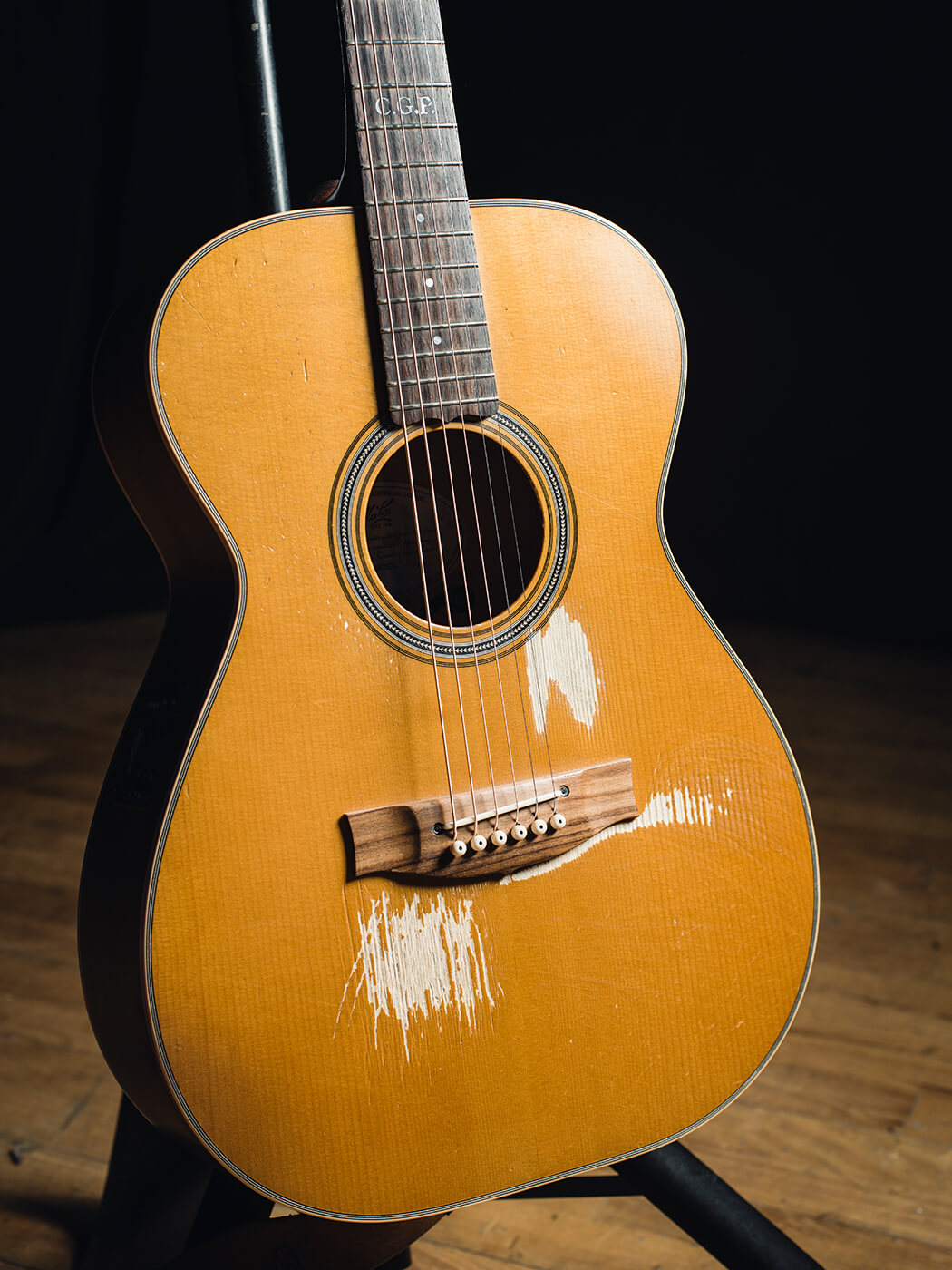
TE: “This is a Traditional cutaway model. It’s the first one that Maton made and it’s a relatively new shape, which is deeper and wider across the lower bout. I keep the neck really straight, so if I hit it hard it will buzz, but when I play you won’t hear any of that over the PA. It’s as clear as a bell. It has a hybrid mic-piezo pickup system too, which I blend. This is a really great guitar for drop-D and G tunings too.
“I could do the whole show on just one guitar but I don’t want to be tuning onstage and I think it’s good for our ears to have a different sound. When I’m doing my own shows, I have three guitars: one in drop-D; my main guitar, in standard tuning; and the third has big strings on it and is tuned to drop-D but a whole tone lower – so it’s drop-C, which gives me a chance to have a whole different frequency range.
JD: “It’s a totally different voice.”
TE: “Keeping the right amount of midrange is so important – and don’t hit that bass too hard! Lots of players are scooping the mids and that means the bass swamps the hell out of their sound. Using a feedback buster makes a difference too. I leave the sound hole covered, crank the pickup and I’m good to go.”
JD: “Everything all the way up. Does it go to 12?”
TE: “I’d put it there if it did.”
JD: “I think we all carry an ideal sound around with us. No matter what guitar we pick up, it’s going to sound like us.”
TE: “Yeah, the sound is in us and we’re trying to make that sound on any guitar we play.”
JD: “I feel like the Matons are a blank canvas for you. They give you all you need to put your personality on them and then you can take the music wherever it needs to go. If you were playing a big J-200 or something, you’d start out with a much different sound but sooner or later, you would make that your sound.
“People say, ‘I like you because I can tell it’s you in three notes,’ so that’s the thing, not what kind of guitar you’re playing, but what kind of sound you create.”
While Emmanuel is often one of the first names to be mentioned when it comes to the philosophical meandering ‘is it the player or the guitar?’, he has little enthusiasm for online discussions.
TE: “I very rarely buy into online debates. I’m just too honest for that sort of thing and sometimes you have to burst someone’s bubble who’s been told something that simply isn’t true and has lived their life by it. I remember someone writing in a Chet Atkins forum about Chet’s guitars, ‘He only played this, he never played that…’. I lived at his house and I saw him play a Kay Kraft because he loved it. He didn’t get a Gretsch guitar out of the case once the whole time I was with him. He had a Telecaster with a B-bender, all sorts of things. He had a Martin D-41 and a Gibson that was made specially for him.
“He’d keep those two guitars downstairs, but I’d come down and find him playing my Maton while he had his breakfast in the morning. He just loved the feel of it. But people don’t always like it when you tell them the truth. Before you know it, it’s World War III.”
While worldwide travel has its joys, maintaining a sense of routine and dedicating time to practice can be a challenge.
TE: “I like those days where I just play tunes all day or jam with other people and make music. That’s fun. But there’s another side, where the discipline comes in and you have to say, ‘Today I’m only going to play with a metronome and tomorrow I’m going to work on my strength.’ It’s not always the same routine.”
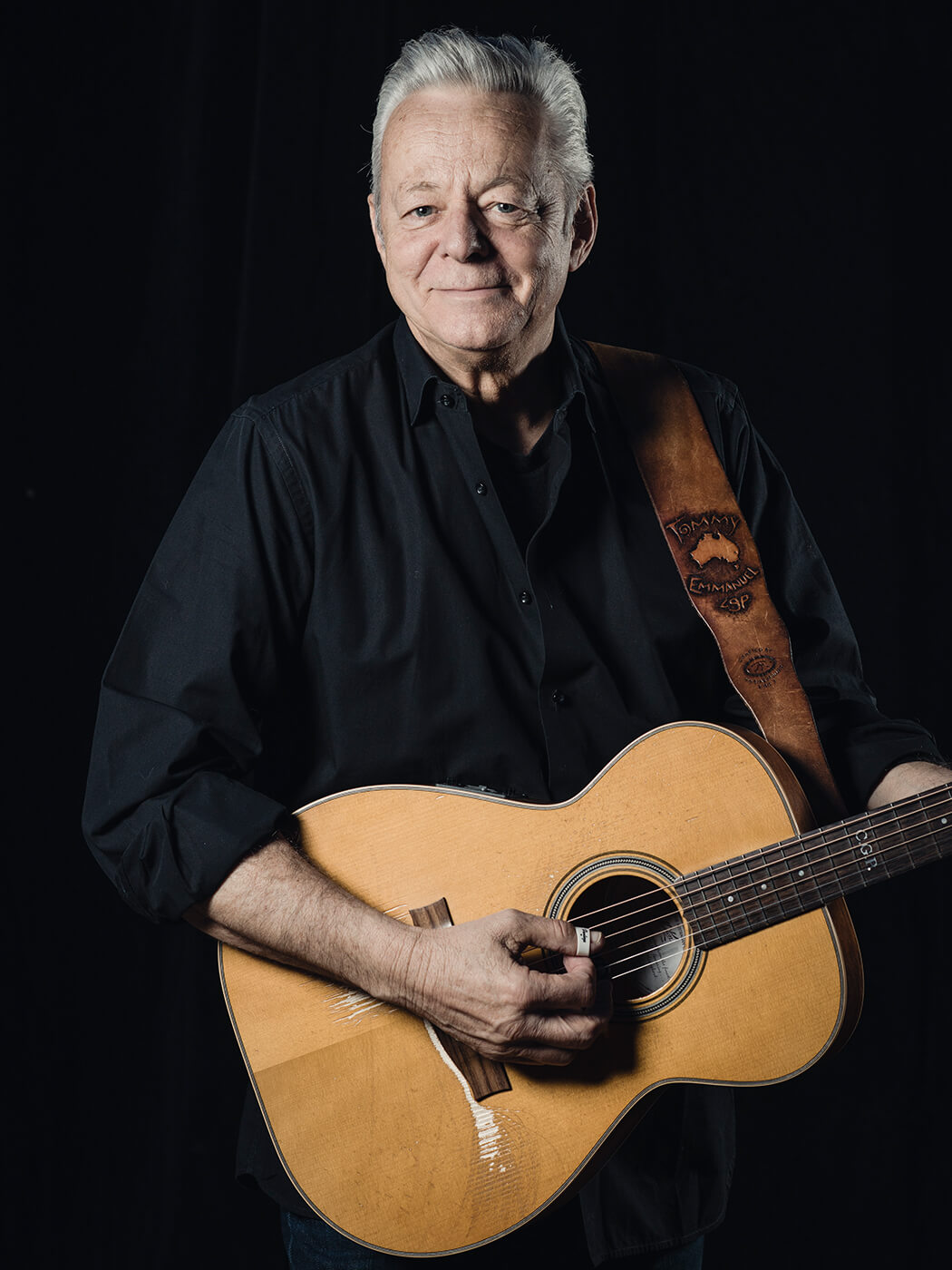
JD: “When you’re travelling, you can’t really play until you get to the show and make sure your hands are talking to each other.”
TE: “Sometimes when we’re touring in America, we have a sleeper bus where we have our own beds, and I usually spend a good part of the day up the back of the bus playing songs, especially if I’m out with Frank [Vignola] and Vinnie [Raniolo]. Those guys love to play all the time, so we get in there and run through everything we’re playing on stage that night, and then we’ll jam Charlie Christian tunes or whatever. Every day is an education too. It gets your blood going.”
With both men having already achieved so much in their careers, we wonder what plans and aspirations they have for the future.
JD: “My main ambition is to get good! I want to be a good musician. It’s a learning process that never ends. If you stop learning, then you might as well quit – and then you’re going to be unhappy.”
TE: “To answer that question from the perspective of the Tom and Jerry show, I think our next thing is to get some more songs together and rework some of the ones we already play. I was talking to Jerry this morning about Chocktaw Hayride, and we played it last night and it really tore up and the people had a great time, but it was over before we knew it. It’s only two-and-a-half-minutes long so we’re going to take some longer solos.
“That’s the next thing we’ll be working on. We’ve only been a duo for a little while and we are both so busy. The tour that we’re planning in the UK is keeping us focused.”

JD: “I keep listening to Tommy’s albums and thinking, ‘I could play on that!’ But I have to pull back because that’s his solo part of the show. So we need to write songs together too, because I love the way he writes and plays.”
TE: “I love the spontaneity of working with Jerry. We’ll try anything and sometimes it works and sometimes it really doesn’t.”
JD: “A good trainwreck can be a beautiful thing. You can’t take your eyes off it while it’s happening. The audience is going, ‘Oh, they’ve done it now. There’s no coming back from that’. But we always find an escape route.”
The Best Of Tommysongs is out on 8 May 2020, more information at tommyemmanuel.com.
